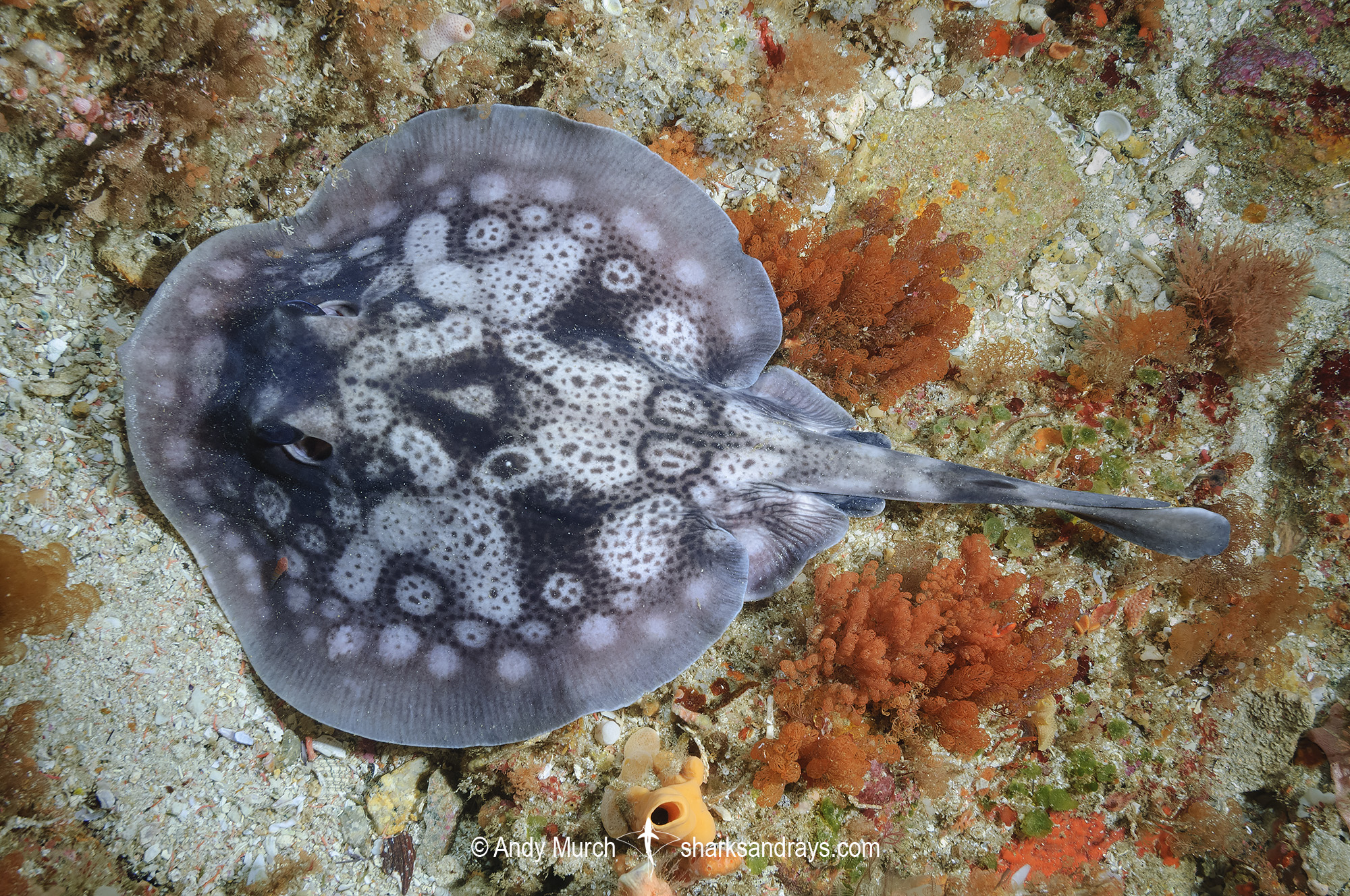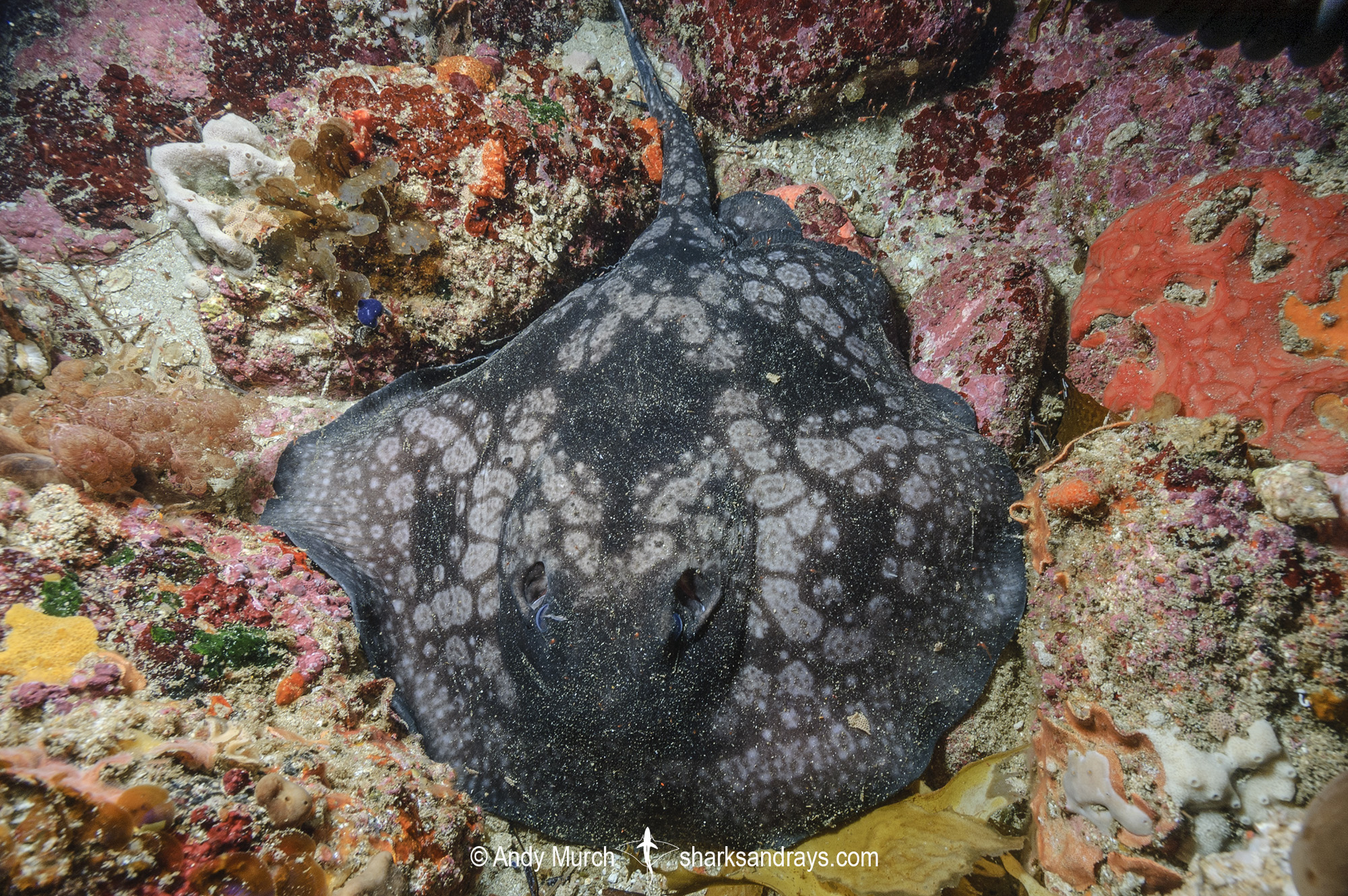Common name(s)
Circular Stingaree.
Identification
A large stingaree with a circular disc that is approximately equal in length and width. Snout broadly rounded or slightly obtusely angular. Anterior margins of disc broadly convex, apices broadly rounded. Disc completely smooth.
Eyes very large; orbit length 0.4 x snout length. Spiracle large, origin below mid-eye. Gill slit margins highly irregular. Mouth large. Approximately 10 oral papillae on mouth floor. Nasal curtain skirt shaped, extended posteriorly into a long lobe, posterior margin weakly fringed. No fleshy lobe on each nostril.
Tail short and broad, length less than 0.7 x disc length, round or oval in cross section. Dorsal fin present. Caudal fin short and deep, with a rounded tip.
Colour
Dorsum bluish grey with a symmetrical pattern of pale blotches and small dark spots. Notable aspects of the overall pattern include a dark mask across the eyes, a large pale ring with a dark interior and white centre blotch located centrally on disc, and pale, outward facing C-shapes on each pectoral fin. Smaller pale blotches form a ring near disc margin. Markings on tail less defined. Ventrum pale.
Size
Total length 60cm. Length at birth unknown.
Habitat
Temperate seas. Found on and around rocky reefs and kelp from shallow water to 120m.
Distribution
Southeast Indian Ocean. The circular stingaree has a very small distribution between Esperance and Rottnest Island in southern Western Australia.
Conservation Status
LEAST CONCERN
The Circular Stingaree is only occasionally reported as bycatch in localized prawn and scallop trawl fisheries (Laurenson et al. 1993, Hyndes et al. 1999), where fishing effort is low. Its habitat preference for hard substrates and kelp areas may provide refuge from trawling activities.
Where the species is taken as bycatch, a concern is the demonstrated low post-release survivorship of trawl caught stingarees (Campbell et al. 2018), and the fact that urolophids frequently abort pups upon capture and handling; even if gravid females survived capture, their reproductive output can be lost (White et al. 2001, Trinnie et al. 2009, Adams et al. 2018).
The species may also be subject to localized habitat loss and degradation due to increased levels of recreational water use and development in shallow embayments around southern Australia.
Citation
Kyne, P.M. & White, W.T. 2019. Urolophus circularis. The IUCN Red List of Threatened Species 2019: e.T60089A68649151. https://dx.doi.org/10.2305/IUCN.UK.2019-1.RLTS.T60089A68649151.en. Downloaded on 24 March 2021.
Reproduction
Viviparous, probably with trophodermic nutrition. Litter size unknown.
Diet
Diet unrecorded.
Behavior
The circular stingaree is a cryptic species that hides among kelp, coral, or sponges, relying on its camouflage for protection. Little else is known of its behavior.
Reaction to divers
Easy to approach. Generally remains motionless unless approached very closely.
Diving logistics
The circular stingaree is seen fairly regularly during reef dives between Rottnest Island and Albany, and probably at numerous other spots further south. It is often found in reef crevices but can sometimes be seen ‘hiding in plain site’ on top of the reef; relying on its pattern for camouflage.





